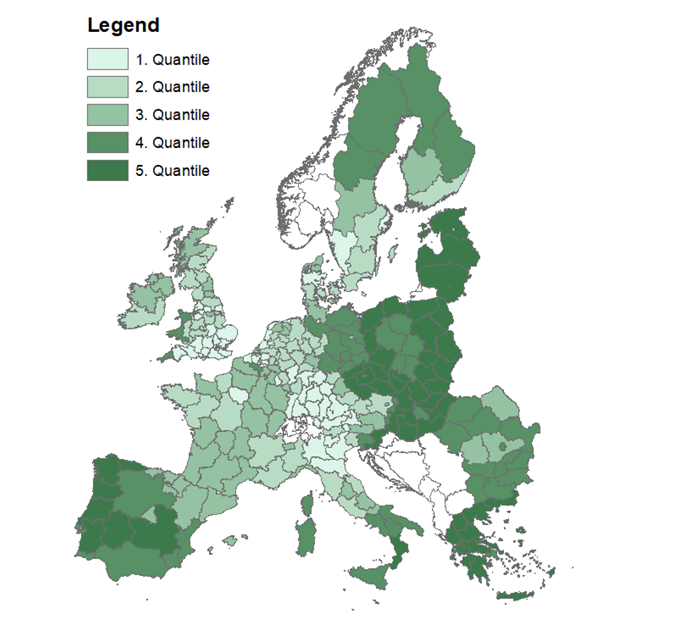Sample project
How could EU structural and cohesion policy be optimized?
The volume of regional redistributive programs in Europe is significant. Public spending allocated to structural and regional policy amounts to ca. 30 percent of the EU’s overall budget. Figure 1 illustrates the regional allocation of these funds. In a recent research project, we analyze the impact of regional policy measures on the spatial equilibrium in the EU. This means, our analysis of the effectiveness of these programs does not only look at the direct effects on the recipient regions in the EU but also considers the overall dynamic across all EU regions.
 Figure 1: Distribution of per-capita transfers from the EU structural and cohesion funds. Regions in dark green receive the highest level of transfers.
Figure 1: Distribution of per-capita transfers from the EU structural and cohesion funds. Regions in dark green receive the highest level of transfers.
Based on this analysis, we infer the criteria for “optimal” regional policy, which maximizes the efficiency of EU structural policy according to our model. This shows that the optimal combination of different types of transfers varies by region. If the EU were to systematically adapt the share of transfers spent for wage subsidies, investments in regional production amenities (e.g., via R&D subsidies) and investments in transportation infrastructure according to the characteristics of the recipient regions, substantial efficiency gains in the use of EU transfers could be generated.